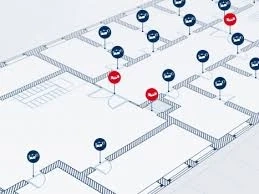Introduction
In an ever-evolving world, security remains a top priority for individuals, businesses, and institutions alike. A crucial component of any security strategy is an effective locking system. The term "Sluitplan," originating from Dutch, translates to "closing plan" in English, encapsulating the essence of a comprehensive and organized approach to securing spaces. This blog post delves into the world of Sluitplans, highlighting their significance, key features, benefits, and considerations.
Understanding Sluitplan
A Sluitplan is essentially a tailored locking system designed to regulate access to various areas within a building or a complex. It is a strategic blueprint that determines who can access specific spaces, when they can do so, and what level of access they have. This concept goes beyond traditional lock-and-key mechanisms, integrating modern technology and advanced access control solutions.
Key Features of a Sluitplan
Hierarchy of Access: A Sluitplan categorizes users based on their roles and responsibilities. This hierarchy ensures that only authorized individuals can access certain areas. For instance, employees might have access to common areas, while managers could access restricted zones.
Master Key System: One of the hallmarks of a Sluitplan is its master key system. This system enables designated personnel to unlock multiple doors with a single master key, streamlining access without compromising security.
Zoning: Buildings often comprise diverse spaces with varying security requirements. A Sluitplan divides these spaces into zones, each with its own set of access rights. This zoning minimizes the risk of unauthorized access.
Key Control: Traditional locks and keys can pose challenges in terms of key duplication and loss. A Sluitplan employs advanced key control measures, reducing the likelihood of unauthorized duplication and enhancing overall security.
Adaptability: As organizational needs evolve, so does the Sluitplan. It can be adjusted to accommodate changes in personnel, access requirements, and building layouts.
Benefits of Implementing a Sluitplan
Enhanced Security: A Sluitplan offers a robust security framework by ensuring that only authorized individuals can access specific areas. This minimizes the potential for theft, data breaches, and unauthorized entry.
Improved Access Control: With a Sluitplan, administrators have granular control over who can access different zones. This is especially valuable in environments where sensitive information or valuable assets are present.
Convenience: The master key system streamlines access for authorized users. It reduces the need to carry a multitude of keys and simplifies the process of navigating through different areas.
Reduced Maintenance: Traditional locks might require frequent rekeying in the event of personnel changes or security breaches. A Sluitplan\'s adaptability reduces maintenance efforts by allowing administrators to modify access rights as needed.
Audit Trail: Modern Sluitplan systems often come with built-in tracking mechanisms. These systems log access attempts, providing an audit trail that can be invaluable for investigations or compliance purposes.
Considerations for Implementing a Sluitplan
Scalability: Consider the future growth of your organization when designing a Sluitplan. Ensure that it can accommodate an increasing number of users, zones, and access levels.
Technology Integration: Embrace technology that aligns with your security goals. This could include electronic locks, biometric authentication, and cloud-based access control systems.
Expert Consultation: Designing an effective Sluitplan requires expertise in security and access control. Consult with professionals who can assess your needs and recommend the most suitable solution.
Training and Communication: Implementing a Sluitplan necessitates clear communication with personnel about the changes and the proper use of new access control methods.
Testing and Adaptation: Before full implementation, test the Sluitplan in a controlled environment. Gather feedback and make necessary adjustments to ensure its efficiency.
Conclusion
In an era where security breaches can have far-reaching consequences, investing in a robust locking system like a Sluitplan is a proactive measure that offers peace of mind. By strategically controlling access, incorporating advanced technology, and adapting to changing circumstances, organizations can fortify their security posture and protect what matters most. Whether in commercial, residential, or institutional settings, a Sluitplan stands as a testament to the power of effective access control.



